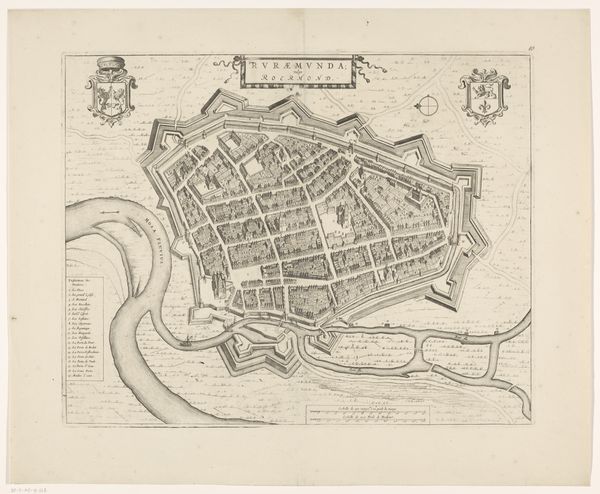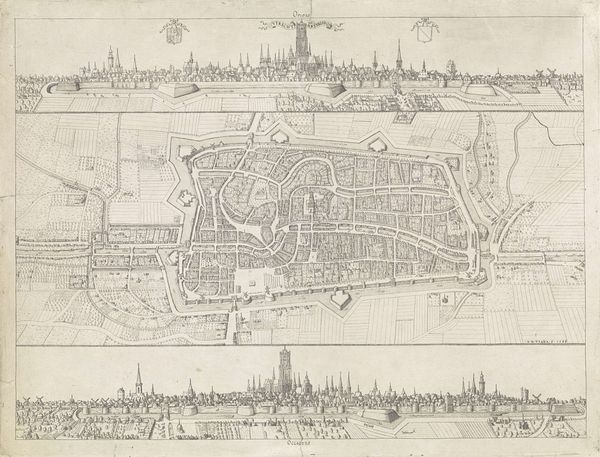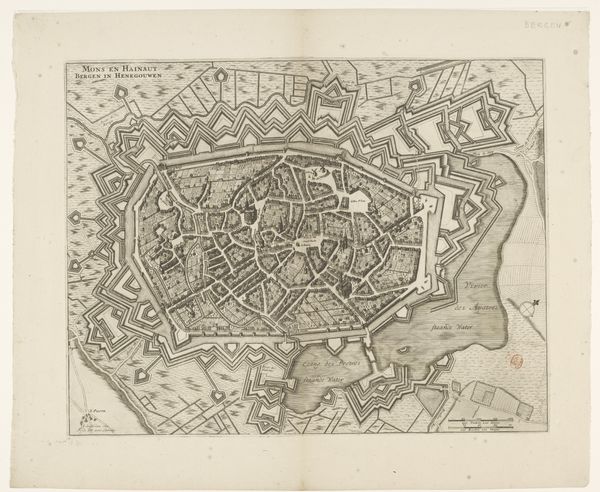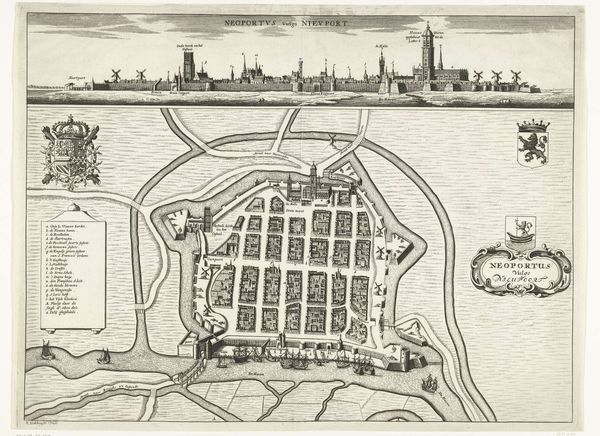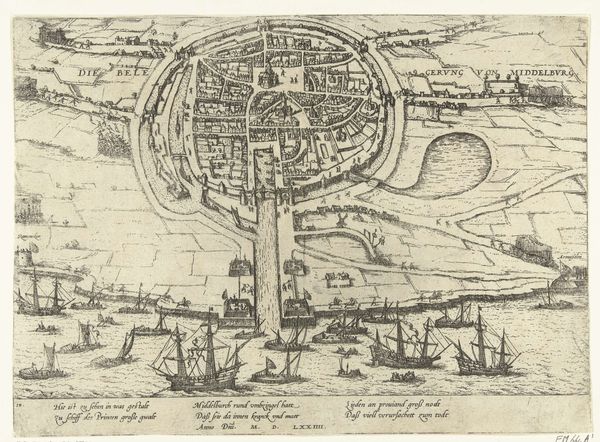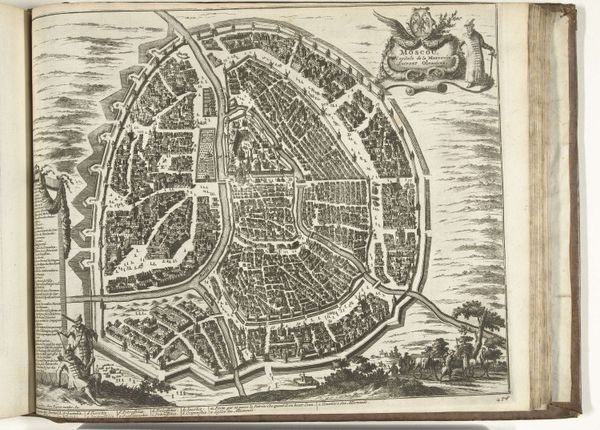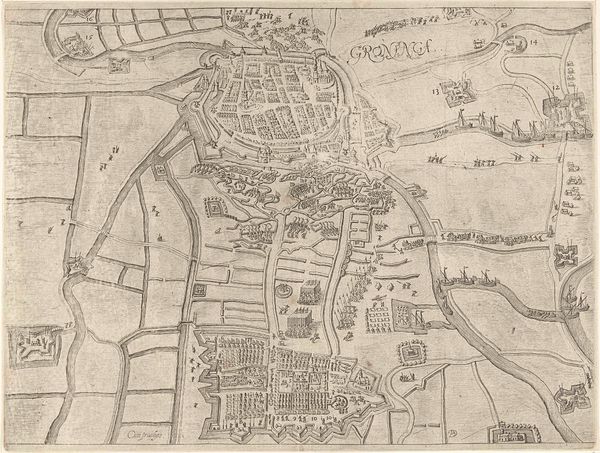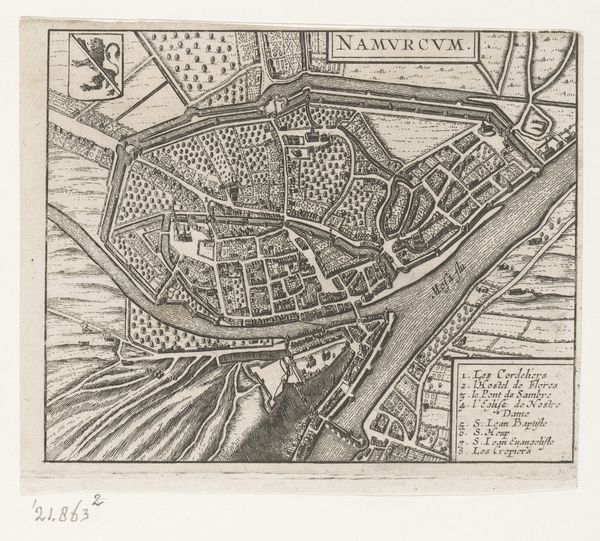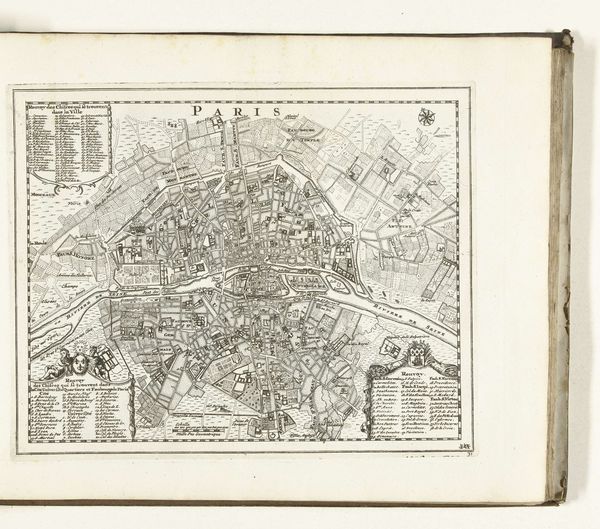
drawing
#
drawing
#
water colours
#
incomplete sketchy
#
possibly oil pastel
#
fluid art
#
sketch
#
arch
#
watercolour bleed
#
watercolour illustration
#
mixed medium
#
sketchbook art
#
mixed media
#
watercolor
Dimensions: 60.2 x 44 cm
Copyright: Public domain
Curator: Before us is Leonardo da Vinci’s "A plan of Imola," created around 1502. It's rendered in drawing, watercolor, and possibly oil pastel, presenting a bird's-eye view of the city. Editor: My first impression is of an almost dreamlike vision. It's technical, clearly a map, but the delicate watercolors give it a hazy, ethereal quality, as if viewing the city through memory. Curator: Absolutely. Consider the context: Da Vinci was commissioned by Cesare Borgia, known for his ruthless ambition, to map the city for military purposes. The map was designed for strategic military planning. Viewing the town from an objective overview, however, suggests a detachment from lived reality, highlighting social and political structures for better conquering the community from above. Editor: I see what you mean. And I’m intrigued by the circular format itself. The circle acts as a frame that contains the urban experience. What feelings might such deliberate round enclosure suggest? It visually emphasizes Imola’s containment, or perhaps, its holistic character. Da Vinci is, above all, creating a symbolic form here, not merely copying an outline. The radiating lines going outward from the center create a visual impact beyond topographical precision, evoking concepts of urban planning, defense and control that serve visual or emotional functions just as well. Curator: It’s crucial to recognize this map wasn’t just about geographic accuracy; it was a tool of power, used by Borgia to consolidate his control. It echoes larger Renaissance themes of urbanism and the relationship between space and authority. How fascinating that a rendering in watercolors on mixed media reveals such weighty subjects. Editor: Water as an expressive symbol also adds to this notion, for me. Blue outlines waterways and seems to spill beyond them, almost bleeding across the land, unifying it visually. This watery domain, for all its representational utility, also grants an emotional depth and unifying aura that serves more than the map’s strict utility. Curator: True, seeing those details helps us to recognize Da Vinci's masterful integration of art and function. It speaks volumes about power dynamics and spatial politics of that period. Editor: Exactly. It reminds us how visual representations are never neutral. Even in technical drawings like this one, emotional depth permeates form and helps invest an artifact with cultural memory.
Comments
No comments
Be the first to comment and join the conversation on the ultimate creative platform.

